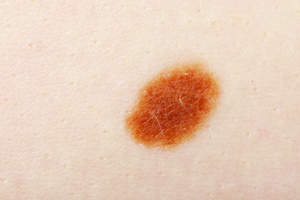MISSION, KS--(Marketwire - Sep 22, 2011) - (Family Features) Susan was a 46-year-old mother of two and businesswoman when she was diagnosed with stage IV melanoma, the deadliest and most aggressive form of skin cancer.
"At one point, I was told I had six to 12 months to live. I had already tried several experimental treatments and was running out of options."
To see what other options might be a good choice for Susan, her doctors tested a sample of one of her tumors using a diagnostic test called the cobas 4800 BRAF V600 Mutation Test. Her tumor tested positive for a certain mutation in the BRAF gene (known as a V600E mutation). This mutation is found in about half of people with melanoma, making them eligible for a certain type of treatment. Susan was able to enter a study for Zelboraf™ (also known as vemurafenib), a personalized medicine that was being studied to block the cancer-driving mutation.
"After starting on Zelboraf I began to notice my tumors shrink. I'm very thankful for the treatment my doctor recommended and the great care and unwavering support of my family and friends."
Zelboraf was recently approved by the U.S. Food and Drug Administration (FDA) and is now the first and only FDA-approved personalized medicine shown to help people with BRAF V600E mutation-positive, inoperable or metastatic melanoma live longer, as determined by an FDA-approved test.
What Is Melanoma?
Melanoma is the less common, but more serious type of skin cancer. When melanoma is caught early, it is generally treatable. However, when the cancer spreads to other tissues and organs, known as stage IV, metastatic melanoma, it is the deadliest and most aggressive form of skin cancer.
The American Cancer Society estimates there will be more than 70,000 new cases of melanoma and nearly 8,800 melanoma deaths this year in the United States.
Treating Metastatic Melanoma
"Until recently, people with metastatic melanoma had very few options. Thanks to researchers and patients like Susan, we now have new options for this disease," said Omid Hamid, M.D., associate director of the Melanoma Center at The Angeles Clinic and Research Institute (www.theangelesclinic.org). "Now people can have their tumor tested for the BRAF V600E mutation to see if they may be eligible for Zelboraf."
Treatment varies based on the stage of the disease. While early-stage melanoma is often treated with surgery, advanced disease has few treatment options available and is not curable. People with metastatic melanoma should consult with their doctor about having tumor tissue tested to see if they may be eligible for a personalized medicine. Current treatments for advanced melanoma include personalized medicines, chemotherapy, immunotherapy and radiation.
Important Safety Information
Zelboraf is a prescription medicine used to treat a type of skin cancer called melanoma that has spread to other parts of the body or cannot be removed by surgery, and has a certain type of abnormal "BRAF" gene.
Zelboraf may cause a type of skin cancer called cutaneous squamous cell carcinoma (cuSCC). CuSCC usually does not spread to other parts of the body. Patients should check their skin and tell their doctor about skin changes including a new wart, a skin sore or reddish bump that bleeds or does not heal, or a mole that changes size or color.
While taking Zelboraf, patients should avoid going out in the sun. When patients go outside, they should wear clothes that protect their skin, including head, face, hands, arms, and legs. They should use lip balm and a broad-spectrum sunscreen with SPF 30 or higher.
Possible serious side effects of Zelboraf include severe allergic reactions; severe skin reactions; changes in the electrical activity of the heart called QT prolongation, which can potentially be life-threatening; abnormal liver function tests; eye problems; or new melanoma lesions.
Common side effects of Zelboraf include joint pain, rash, hair loss, tiredness, sunburn or sun sensitivity, nausea, itching, or warts.
These are not all of the possible side effects of Zelboraf.
Patients should read the Zelboraf full Prescribing Information and Medication Guide for additional important safety information at http://www.zelboraf.com.
Call Out Box:
What Are The Symptoms Of Skin Cancer?
- A new mole or lesion on the skin
- A mole that changes in size, shape or color
- A mole that looks different from others
Warning Signs Of Melanoma Can Include:
- One half of the mole looking different from the other half
- A mole with irregular edges
- Different colors on a single mole
- A very large mole
- A mole that looks different from surrounding moles
About Family Features Editorial Syndicate
This and other food and lifestyle content can be found at www.editors.familyfeatures.com. Family Features is a leading provider of free food and lifestyle content for use in print and online publications. Register with no obligation to access a variety of formatted and unformatted features, accompanying photos, and automatically updating Web content solutions.
Contact Information:
Wendy MacDonald
wmacdonald@familyfeatures.com
1-888-824-3337 ext. 235
http://editors.familyfeatures.com
